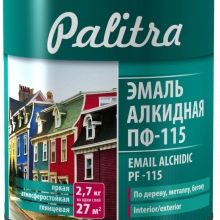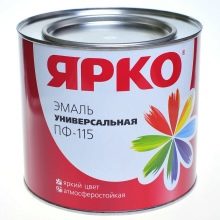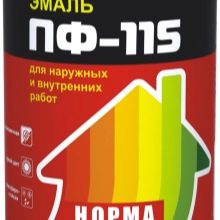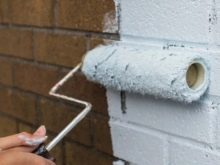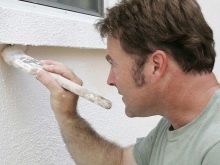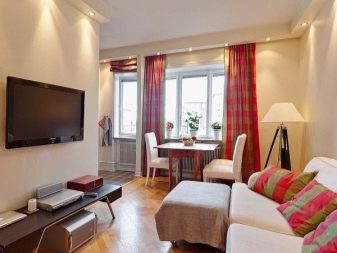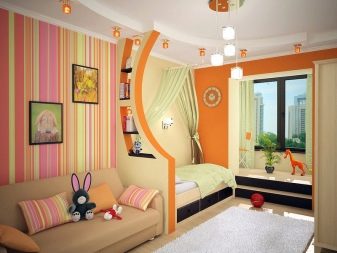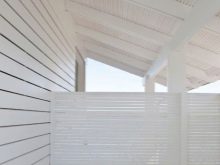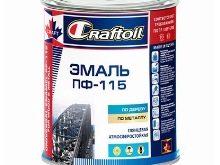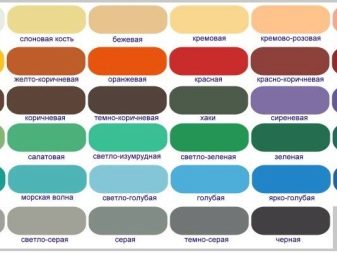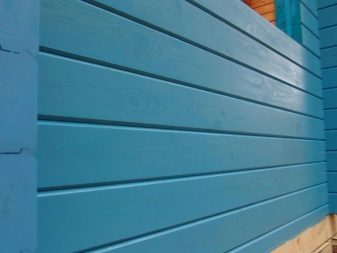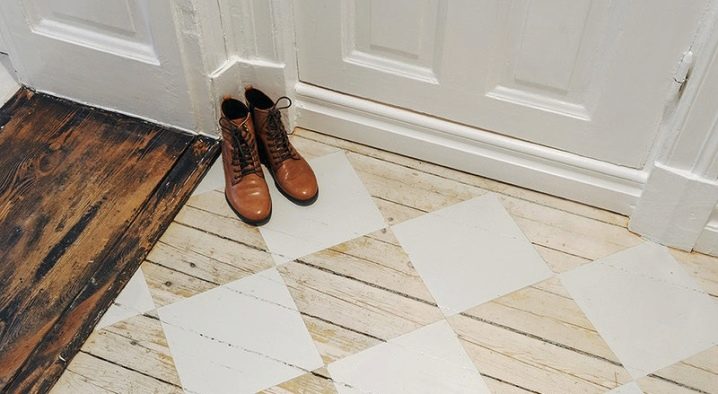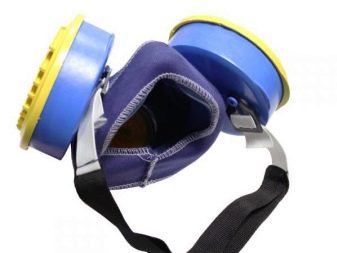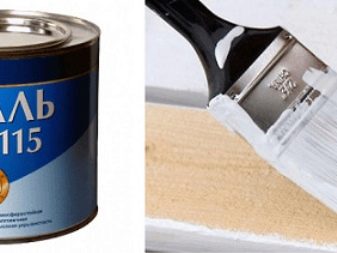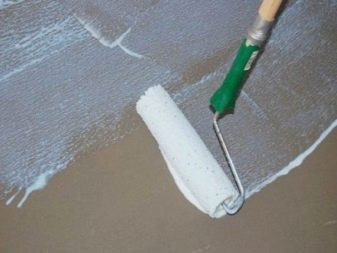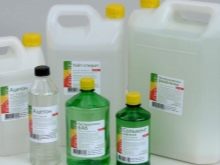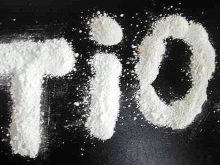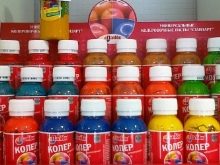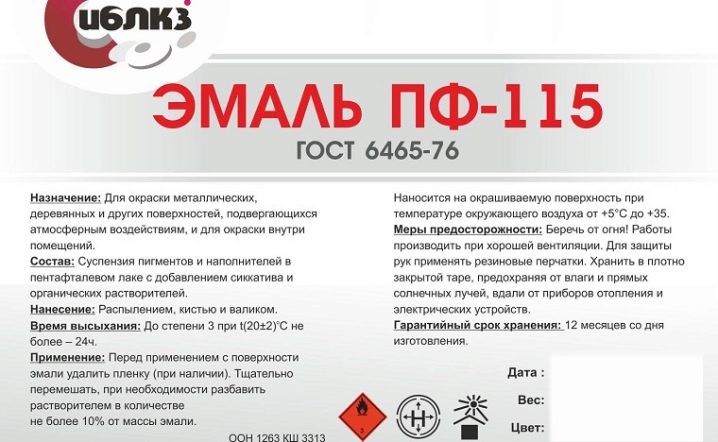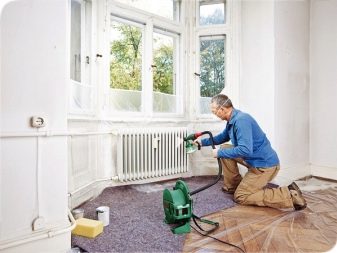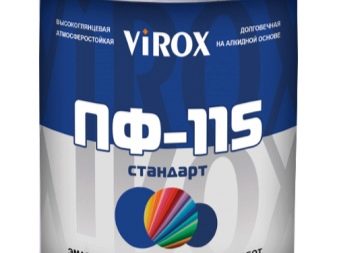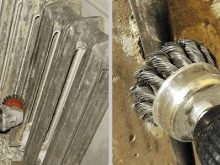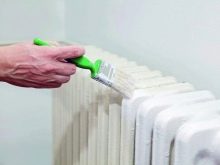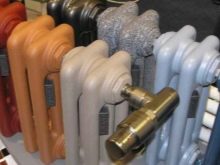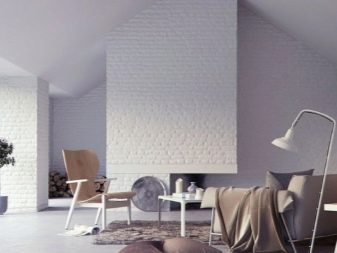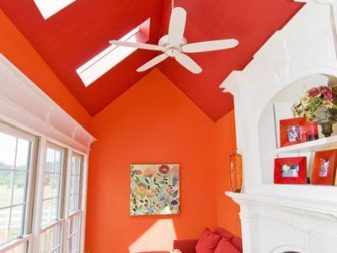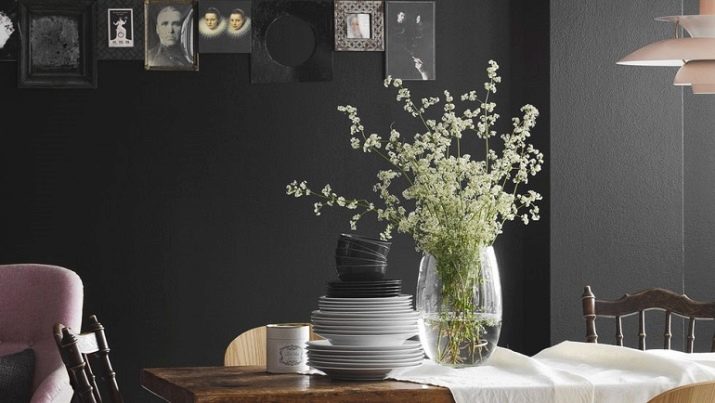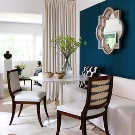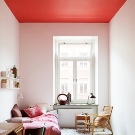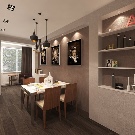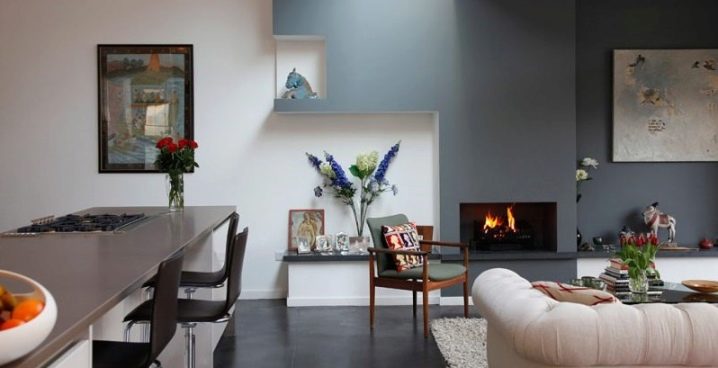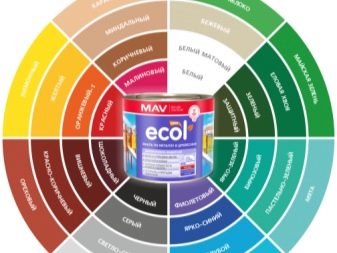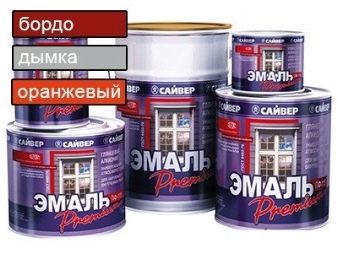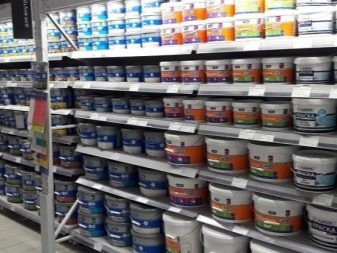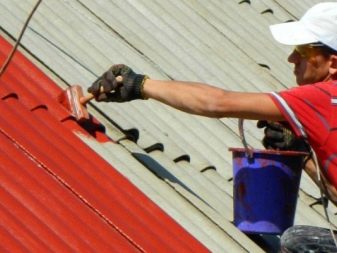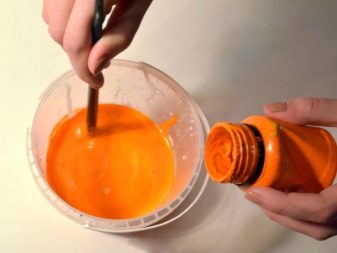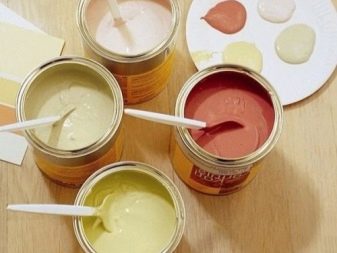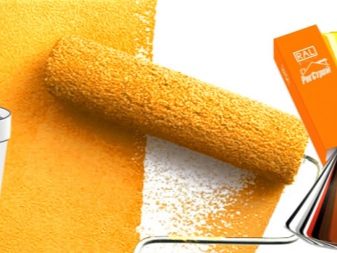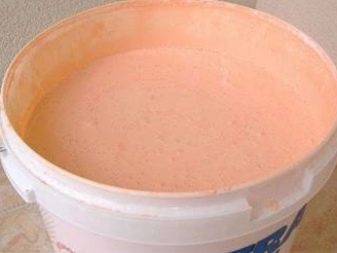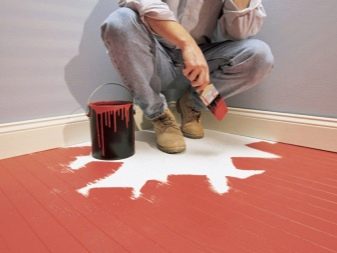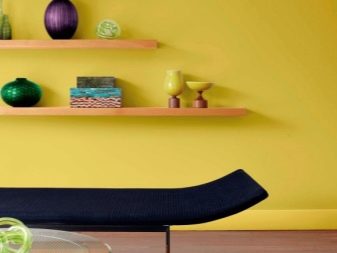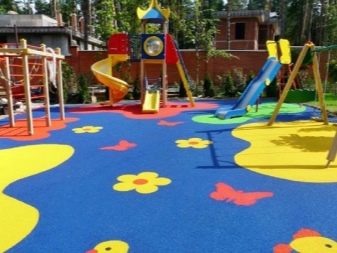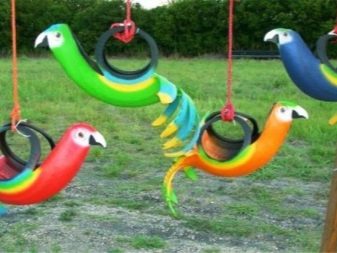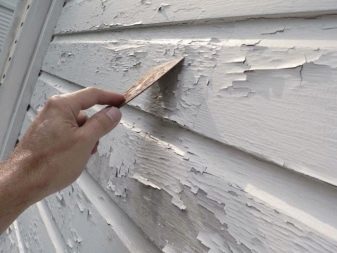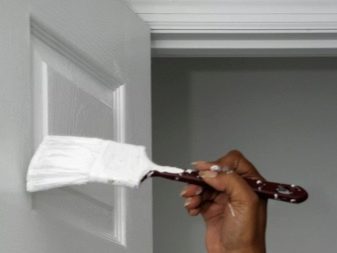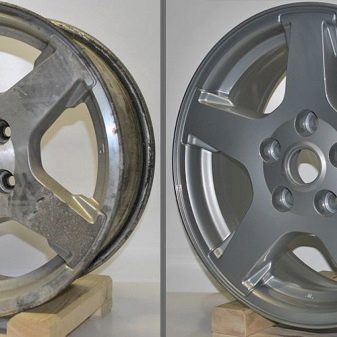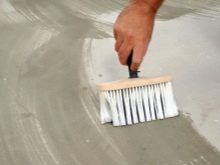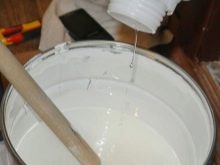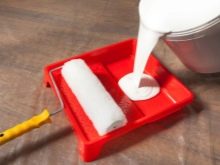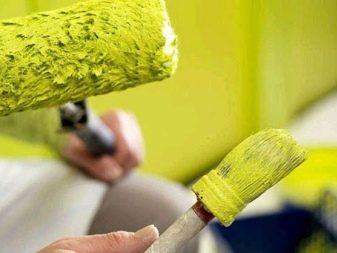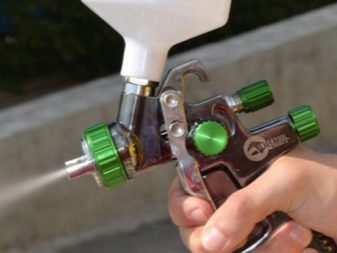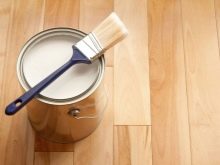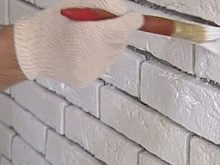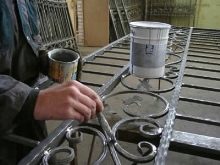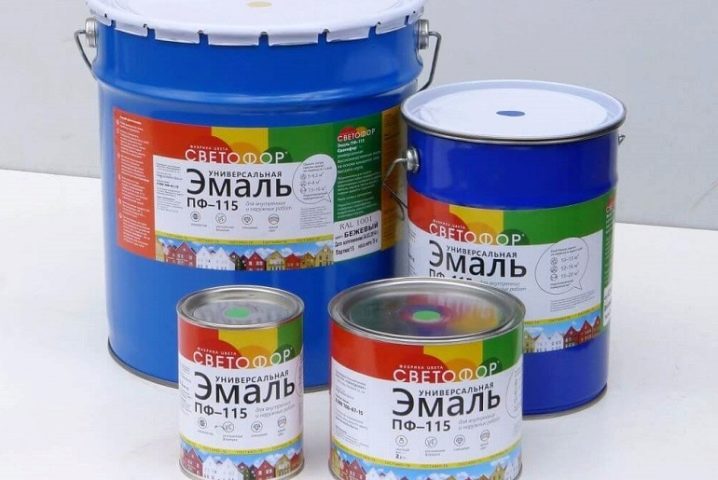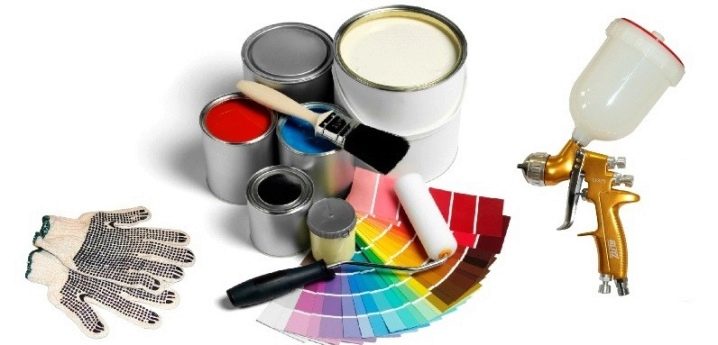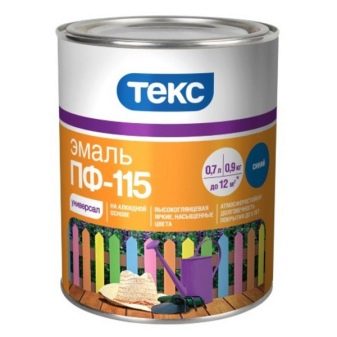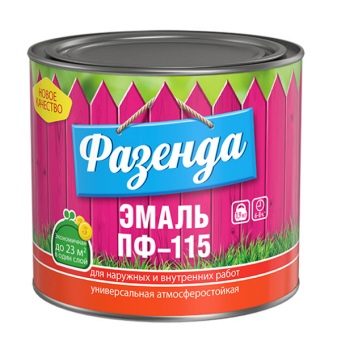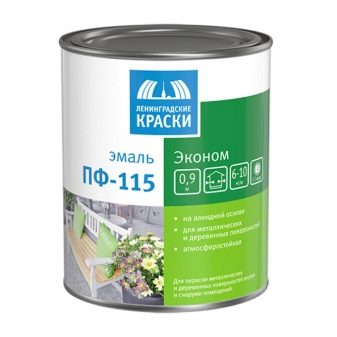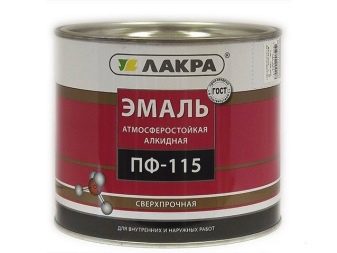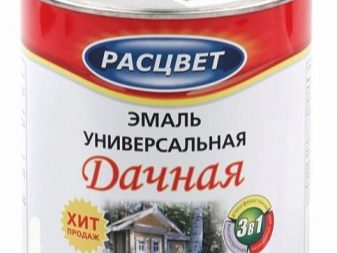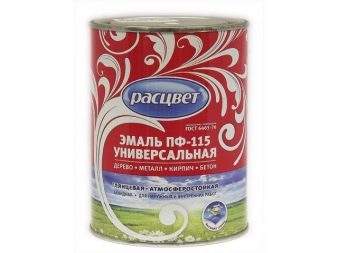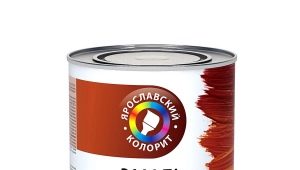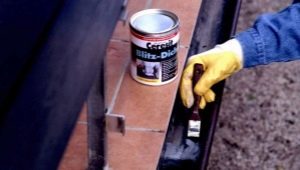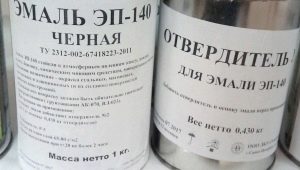Enamel PF-115: technical characteristics and application
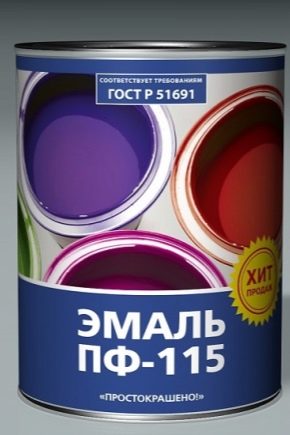
Despite the variety of modern building and finishing materials, all kinds of enamels and paints continue to enjoy enormous popularity today. They are used for exterior and interior decoration of premises, they fit perfectly on the surface, made of a variety of materials.
In addition, the interior, decorated with the help of modern varieties of enamels, looks very stylish, beautiful and even creative. Our article is devoted to such a popular variety of paintwork materials such as enamel PF-115.
Special features
To begin with, it is worth noting that it is more correct to call enamel PF-115 enamel paint, since there is a certain difference between these concepts. Enamel provides a more durable and smooth film on the surface than oil or alkyd paints.
Enamel paints are represented by several varieties:
- alkyd;
- pentaphthalic;
- glyphthalic;
- alkyd-melamine;
- alkyd-phenolic and alkyd-oil.
Pentaphthalic type of enamel is considered the most common and widely used in everyday life. In this group of paintwork materials, you can find a composition suitable for different types of surfaces (wood, concrete, metal, brick, chipboard, fiberboard, asbestos cement, plaster, oil or other paint, etc.). The color range of such enamels is truly unlimited: the finished coating can be matte, semi-gloss or glossy.
Enamel is perfectly combined with other types of finishing materials. This greatly expands the scope of its use. From material of economy class, it easily turns into an ideal option for decoration of the most modern, original and fashionable interiors.
Enamel coating perfectly combined with decorative plaster, paper and non-woven wallpaper, ceramic tiles, natural and artificial stone, elements made of metal, wood, concrete, etc.
Enamel PF-115 has proven itself and continues to hold a leading position among similar materials due to impeccable performance and high decorative characteristics.The paint allows not only to create a beautiful, smooth, shiny, glossy or discreet matte layer, but also to give the surface additional resistance to the effects of external manifestations, humidity, temperature changes, etc.
The popularity of this coloring composition led to the fact that not only large plants, but also very small companies are engaged in the production of this modification today. Different types of enamels from this group have different alphanumeric designations that determine their properties and characteristics:
- the abbreviation "PF" means belonging to the pentaphthalic group of enamels;
- the first number “1” indicates that the composition is intended for outdoor use;
- "15" - the ordinal number of the composition in the catalog.
To make a complete picture of this material, it is necessary, first of all, to evaluate its advantages and disadvantages.
Enamel PF-115 has a huge number of positive characteristics.
- Affordable price. An important factor when it comes to choosing a finishing material for a large amount of work or inexpensive repair.
- Possibility of use for outdoor and indoor use.This means that the composition has moisture resistance, it is not afraid of UV rays, aggressive climatic conditions, temperature changes, etc. The enamel perfectly retains its performance characteristics in the range from -50 to + 60 ° С.
- Wide range of colors. In addition, if necessary, obtain a certain shade of enamel perfectly tinted at home.
- Ease of application. The coloring structure is easily and quickly applied with different types of tools.
- Wear resistance. The enamel forms on the surface a fairly strong film that is resistant to mechanical stress.
- Surface protection against mold and mildew.
- Durability.
- Corrosion protection.
- Resistant to gasoline and oil.
- Resistance to mineral fertilizers.
- Resistance to detergents.
However, even this popular type of enamel is not without a number of disadvantages.
- The composition dries long enough (24 hours). This moment may be crucial in some cases when it is necessary to paint and dry the surface very quickly.
- Enamel PF-115 has a pronounced specific odor (not very sharp, but quite noticeable for people prone to allergies).
- The enamel coating is very hard to remove from hands and stained instruments. Usually builders prefer to discard brushes and rollers used in painting than to fiddle with cleaning them.
- The material is toxic and fire hazard.
- Before applying enamel, it is necessary to pre-prime the treated surface.
Composition
The basic composition of enamel PF-115 includes:
- semi-finished pentaphthalic lacquer;
- titanium dioxide;
- White Spirit;
- coloring pigments and fillers.
However, this composition may vary depending on the final color. For example, zinc white and iron blue are added to the composition to produce blue enamel, and technical carbon is used to create gray.
The enamel production is carried out in accordance with the requirements of GOST 6465-76, in which minor changes were made in 2001, which did not radically affect the components of the composition and their percentage ratio.
The purpose of the corrections is to reduce the cost of the product, but it is worth bearing in mind that the enamel, which was not made according to the original standards, is somewhat inferior in quality to the original product.
It should be noted that the enamel offered for domestic and industrial needs is somewhat different. The second option involves a concentrated formulation that requires dilution before use. Household pentaphthalic alkyd paint is ready for use. However, if necessary, it can also be diluted with a solvent.
On the shelves of stores today you can find two types of enamel PF-115: "Economy" and "Standard". The difference between the two is cost and quality. Enamel "Standard" has the best hiding power, creates a beautiful, durable, smooth film on the surface, more resistant to adverse weather conditions.
Composition properties
Now we will dwell on the technical indicators of the material:
- Enamel forms a uniform smooth film on the surface without cracks and irregularities (the standard allows for small roughness);
- the density of the material is 1.17–1.3 kg / l;
- conditional viscosity level - 60–120 s;
- working temperature range - -50 - + 60 ° С;
- mass fraction of non-volatile substances ranges from 49 to 70%;
- drying time at an air temperature of + 20 ° C and a humidity of not more than 65% is normally not more than 24 hours, however, some types completely dry out only after 2 days;
- adhesion - 1 point;
- covering power - 40–120 g / sq. m;
- bending elasticity - not less than 1 mm;
- resistance to mechanical stress - 40 cm;
- resistance to water - at least 2 hours;
- resistance to oils - 24 hours;
- gloss - glossy, matte, semi-gloss, gloss level - 40–60%;
- hazard class - 3.
Enamel is offered in containers of different sizes, including 0.5, 0.9, 1.9, 2.5, 12, 24, 60 kg.
Consumption
There is no clear regulation of enamel consumption. The amount of paint needed to cover 1 m2 of surface depends on the color of the enamel, the number of layers, the type of application tool used (brush, roller, pneumatic spray), the characteristics of the material being painted. The average consumption ranges from 100 to 180 g of enamel per 1 m2.
As for the color range, the least economical in terms of consumption options are white and red enamels. Intermediate option - color paints. Least of all the processing of the same surface area will require black enamel.
Consider what surface area can be covered with 1 kg of enamel in different colors:
- white - 7–10 m2;
- black - 17–20 m2;
- blue, blue - 11–14 m2;
- brown - 13–16 m2;
- red - 5–10 m2.
The number of layers depends on the color of the selected enamel (as a rule, white or light paint is applied several times),type and condition of the treated surface. For example, concrete or brick must be painted at least 2 layers.
Before applying the next, you must wait until the previous layer is completely dry. Dries each of them, we recall, about a day.
In more detail about technology of works with different types of surfaces we will talk below.
Colors
PF-115 enamel is presented in a fairly wide color range. However, it is not at all limitless. As a rule, basic colors and a small amount of shades are offered. If there is no suitable tone in the palette, you can always get it yourself by mixing several colors.
By color, the enamel of the species under consideration is:
- white (and white matte);
- beige;
- cream;
- yellow;
- orange;
- green
- red;
- blue
- gray
- lilac;
- pistachio;
- turquoise;
- cherry
- brown;
- black and so on
As mentioned above, the properties and technical characteristics of enamels in different colors may vary. This is due to the properties of the pigments that make up the material.
Enamels of different shades are perfectly mixed and tinted. For this purpose tinting pastes are used.As a rule, they are packaged in small-volume plastic bubbles with a narrow neck, which allows you to measure the required amount of color in drops. Asterisks on the packaging of the composition indicate its resistance to sunlight.
To get the desired shade of enamel at home is quite simple - you just need to strictly follow the tinting technology.
- To begin with, it is necessary to coat a small amount of enamel on the sample, paint a small area of the surface and allow to dry.
- Kohler in the paint is added drip. First, a small amount of enamel is painted, then it is added to the main jar and thoroughly mixed.
- If you need a large amount of material, then you need to tint not separately for the banks, but all the paint at once.
When creating a new shade of paint, you must remember the following nuances:
- for mixing it is necessary to use color and paintwork material from the same manufacturer;
- the intensity of the shade may slightly change after the coating completely dries - this must always be remembered;
- if the shade is selected using a computer program, the monitor must be properly configured to avoid distortion of the future color of the paint.
By the way, tinting paste can also be used to paint other materials, for example, putty.
Field of use
The scope of use of this coloring structure is rather wide. Despite the fact that the enamel is designed for exterior work, it is often used for interior design: it is great for painting walls and ceilings. But for the floor it is used less frequently. This is due to the insufficiently high resistance of the material to constant and substantial mechanical loads.
Most often, beige or brown paint is used for the floor that is not subject to intense stress. Snow-white matte or glossy composition is used to cover window sills, window frames, doors made of wood and metal, radiators, roof, basement and facade of the building, etc. Colored paints are often used for decorative decoration of children's playgrounds ( sandboxes, slides, wooden figures), gazebos or verandahs, utility rooms, etc.
As for industrial use, this composition is successfully used in mechanical engineering, machine-tool construction,for painting agricultural machinery, metal structures, steel structures, for the design of buildings and various buildings.
How to apply?
The painting process, like any other type of finishing work, requires preliminary thorough surface preparation. The fact is that enamel (especially glossy) can not only create a beautiful, even, brilliant coating, but also emphasize all the available errors (irregularities, chips, tubercles, etc.).
The working surface should be completely cleaned from the remnants of the previous layer of paint, dirt, rust and other contaminants.
Before painting a metal surface, it must first be cleaned of corrosion, degreased and primed. The wooden surface is first cleaned with sandpaper, and then treated with a primer, for example, linseed oil, to reduce the absorbency of the enamel dye. This also applies to other porous surfaces: they are usually treated using alkyd based primer.
Plaster and concrete base should be well dried and dust-free.. Only with strict adherence to these recommendations can you get a truly high-quality, beautiful, strong enamel coating.
To obtain the most effective result, it is better if the primer is from the same manufacturer as the paint. This will significantly reduce the consumption of the composition and improve adhesion between it and the treated surface.
PF-115 enamel is offered to customers already in finished form - it remains only to mix it well. However, if a thinner consistency is required, the mixture can be diluted with white spirit or another suitable solvent.
After finishing the preparatory work, you can proceed directly to the painting.
- It is possible to apply paint with any convenient tool: brush, roller, spray gun. However for work it is more convenient to use the roller. Hard to reach places are painted with a brush. If the surface is sprayed, the enamel must first be diluted with white spirit (no more than 10% of the total amount of dye).
- The optimum air temperature during dyeing should be in the range from 18 to 28 ° C. However, it is allowed to carry out work at lower or higher rates. Drying speed of paintwork material at too low temperatures significantlywill increase.
- If staining occurs indoors, it is desirable to provide good ventilation. The smell, though non-toxic and completely disappears after a few hours, is still quite noticeable.
For safety reasons, enamel should not be used near sources of open flame.
And a few more recommendations about the coating of surfaces made of different materials.
- Metal. 1 layer of suitable primer or rust converter + 2 layers of enamel.
- Wood. Soil + 2-3 layers of dye.
- Plastered, brick, concrete and other types of surfaces - 2-3 layers of enamel. Priming is carried out as needed.
At a temperature of + 20 ° C, the drying time of one layer is no more than a day. Allowed the option of drying the surface at a temperature of + 100-110 ° C for 1 hour. Enamel is stored at temperatures from -40 to + 40 ° C for 12 months from the date of issue.
Tips and tricks
Enamel PF-115 is considered to be one of the most popular finishing materials. In many ways, this is facilitated by high quality, ease of application and affordable price. This is used by some unscrupulous manufacturers, offering customers poor-quality formulations at reduced prices.
In order not to fall for the tricks of fraudsters, when choosing paint it is necessary to adhere to some recommendations.
- When buying, be sure to pay attention to the manufacturer. A well-known and proven company offers products manufactured according to an established standard, which is not the case with small, newly emerging companies.
- The original quality product can not be sold at a price less than 65 rubles per 1 kg, even with a discount or a promotion.
A clearly underestimated cost may indicate a fake product.
- The presence of a sharp, caustic smell. White spirit is a part of many types of enamels, but an overly intense smell is a sign of a poor quality product.
- The original enamel after opening the can and storing it in the open air is covered with a film.
- If the coating does not dry out even after 48 hours, then this is a very poor quality product.
- Certificates of conformity, which must be present with the seller, will help to ensure the quality of products.
Most often, customer complaints related to the long drying period of the coating appear after buying the material in questionable outlets.
Manufacturers
Manufacturers offering a wide range of paints and varnishes, today a lot. Some of them have a long history of successful development, others offer products that are in demand not only in the domestic market, but also abroad.
In order not to get lost and to acquire truly high-quality products, we will focus on the most famous and time-tested brands.
- Opens the rating of the company "Tex" - one of the most popular brands today. The company offers a wide range of finishing materials used for both internal and external works. A series of coloring compositions PF-115 includes several types.
- "Universal". The paint is available in a wide range of colors: white, black, beige, cherry, emerald green, bright greens, caramel, cornflower, etc. The paint is suitable for painting structures and surfaces made of wood, metal, concrete, and also particleboard and fiberboard. 1 kg of enamel allows covering an area of 7–13 square meters. m (1 layer). Shelf life - 2 years. The paint is available in containers of different packaging: from 0.5 to 60 kg. Degree gloss - gloss.
- "Optimum". The material is presented in 20 shades of different degrees of saturation. Suitable for most types of surfaces. Not used for flooring. Consumption - 1 kg per 7–11 m. Shelf life - 1.5 years. The degree of gloss - gloss and matte (only for white enamels).
- "Fazenda". Ideal option for economical repair. Consumption - 1 kg per 6–16 m2. Used to paint wood and metal. Not applicable for flooring.
- "Economy". This type is most often used in mass construction. The degree of shine is half gloss. Used for most types of surfaces. Consumption - 1 kg per 6-10 m2.
- Lacra. This company is one of the three best manufacturers of paint and varnish products in the country. The brand's products are characterized by a rich assortment of colors, good hiding power, excellent adhesion, and low cost. Enamels are mostly glossy. The consumption of the coloring matter depends on its color. The paint is available in several packaging options: from 0.45 kg to 20 kg.
- "Prestige". The company offers its customers the widest range of high quality paintwork materials. Enamel is presented in 32 shades. Differs in the increased level of weatherability.Ideal for indoor and outdoor use. We should also note the type of enamel PF-115 silver. Heat-resistant, anticorrosive decorative dye is designed for decoration of various kinds of heating structures, heat pipes, chimneys, etc.
- "Yaroslavl paints". One of the most purchased and affordable options. Products are presented in rich colors. Paint allows you to create a beautiful glossy finish on the treated surface.
- Empils. Under this brand several series of paint and varnish products are produced annually, intended for both industrial and private use. Enamel PF-115 is presented in several collections.
- "Country". Suitable for decorative surfaces made of most materials. Used for decoration of window frames, doors, etc.
- "Unpainted". For design of structures made of wood and metal, which are exposed to the weather, as well as used indoors.
- "Blossom". Matt paint for indoor and outdoor use.
- Empils. Glossy and matte version for interior and exterior works.
In order not to be mistaken with the choice of the manufacturer, it is worthwhile to first read the online reviews and recommendations of customers who have already been able to appreciate the quality of products from various brands.
The cost of products from different manufacturers may vary significantly. It depends on the use of different in color pigments and fillers, fame and "promotion" of the brand, product specifications, etc. And the quality of the pigment has a direct impact on such technical characteristics of enamel as hiding power and resistance to solar radiation. One of the most "non-burnable" compositions are dyes of the Empils brand.
In the next video you will find a comparative review of enamels PF-115.

